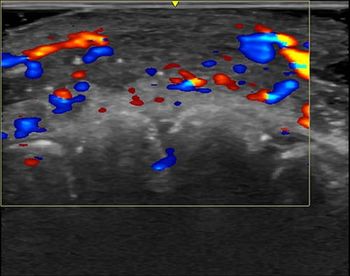
Soft demand for MR and CT strengthens buyers' hands
The Deficit Reduction Act that went into effect in January pulled the rug out this year from under the vendors of CT equipment and flattened the rebound that makers of MR scanners had hoped for in 2007. That could be good news for anyone looking to buy a new CT or MR scanner in the coming months.
The Deficit Reduction Act that went into effect in January pulled the rug out this year from under the vendors of CT equipment and flattened the rebound that makers of MR scanners had hoped for in 2007. That could be good news for anyone looking to buy a new CT or MR scanner in the coming months.
Soft demand has increased the negotiating power of those willing to buy. In the first half of this year, the most recent period for which industry estimates are available, street prices for CT systems fell to around $900,000, down from about $940,000 in 2006, a drop of close to 4%.
This number is only a benchmark, as it reflects a conglomeration of sales for all scanners sold into the U.S., regardless of performance level. A more detailed breakdown comes from Andre Hartung, Siemens Medical Solutions vice president of CT marketing and sales, who estimates that a well-equipped 64-slice scanner ranges up to about $1.3 million, a far cry from the nearly $2 million that these scanners commanded when they entered the market. Sixteen-slice systems can now be purchased for around $800,000 or even less, depending on the circumstances of the sale.
"In the U.S., 16-slice today is entry level," Hartung said. "Hardly any smaller systems are really attractive any more."
Street prices for 1.5T MR scanners fared better than those for CT. In the first half of 2007, the MR average selling price was about $1.5 million. This compares with $1.4 million in each of the previous two years, a relatively small increase due to a relatively big jump in 3T. If demand continues, 3T shipments to U.S. sites will tally about $300 million this year, about 15% higher than in 2006.
"In the U.S., we have definitely seen continued growth and interest in 3T," said Jeffrey Bundy, vice president of Siemens MR division USA.
If the year ends as vendors expect it will, CT sales in the U.S. will be down $200 million from 2006 and MR sales will be about the same or slightly below the previous year. This finish is, perhaps, not so bad.
In the first half of 2007, vendors shipped about $630 million in new MR units to U.S. customers, almost exactly the revenues achieved at the midway mark in 2006. This put the industry on track to pull in more than $1.2 billion from new shipments by year's end, about the same as the year before.
The problem, according to vendors, is that their annual gross from U.S. sales will hardly have changed over the last three years. Until the disappointing results encountered so far, the industry was hoping for a rebound on pent-up demand. What's more, revenues have been propped up by the increasing sale of the more expensive 3T scanners, making the sales picture look a bit brighter than it actually is.
In CT, the gloom is more apparent and it will be harder to dispel. CT sales dropped precipitously in the first half of 2007, a stark contrast to the record high achieved last year. At the midway point this year, units shipped to U.S. customers brought in about $750 million, more than $100 million less than the first half of 2006.
Vendors blame the depressing effect of the DRA on demand for new units by outpatient clinics and a carryover dampening of the hospital sector. Adding to the general malaise has been a natural waning of demand for 64-slice scanners, which for three years had been fueling the CT marketplace.
Vendors may have to wait until the market, now saturated with premium 64-slice CT scanners, is pumped up by the need to move on to the next generation of scanners, perhaps 128- or 256-slice systems, possibly multibeam or multi-energy. But no one is particularly optimistic for a near-term turn around.
The same could have been said a few years back for an MR rebound. The vendors of those scanners are still waiting.
Newsletter
Stay at the forefront of radiology with the Diagnostic Imaging newsletter, delivering the latest news, clinical insights, and imaging advancements for today’s radiologists.




























